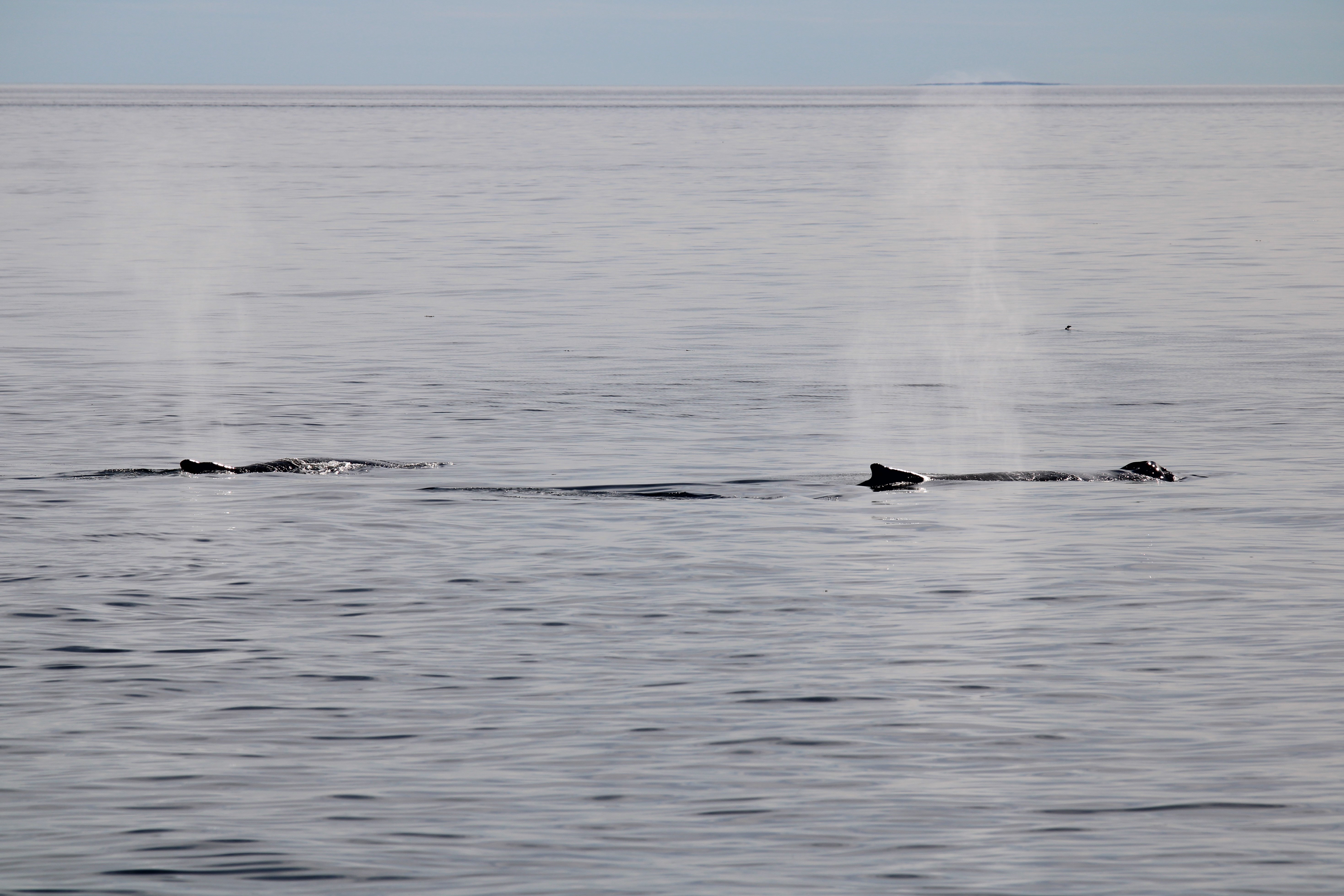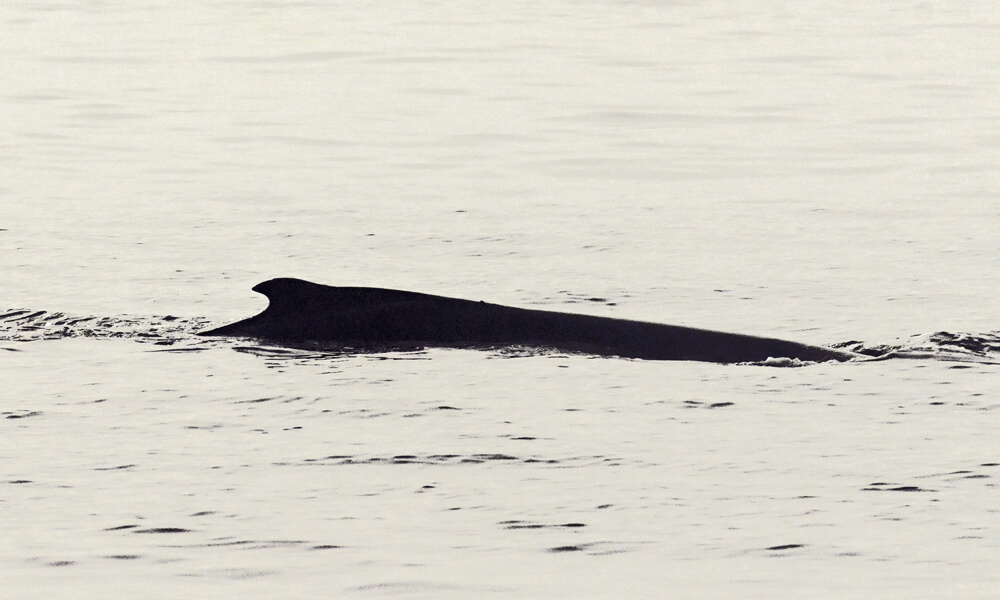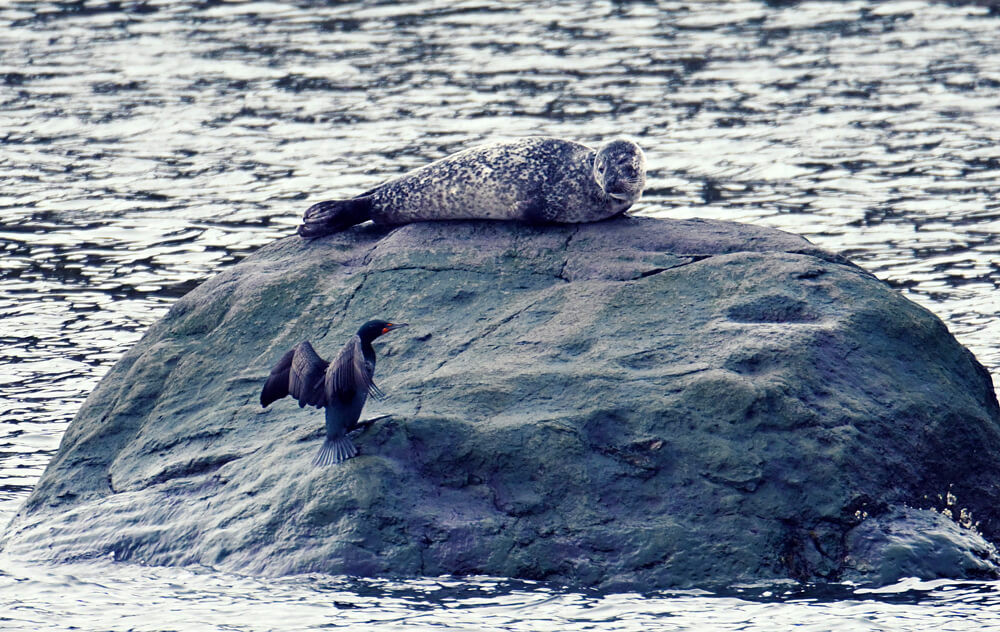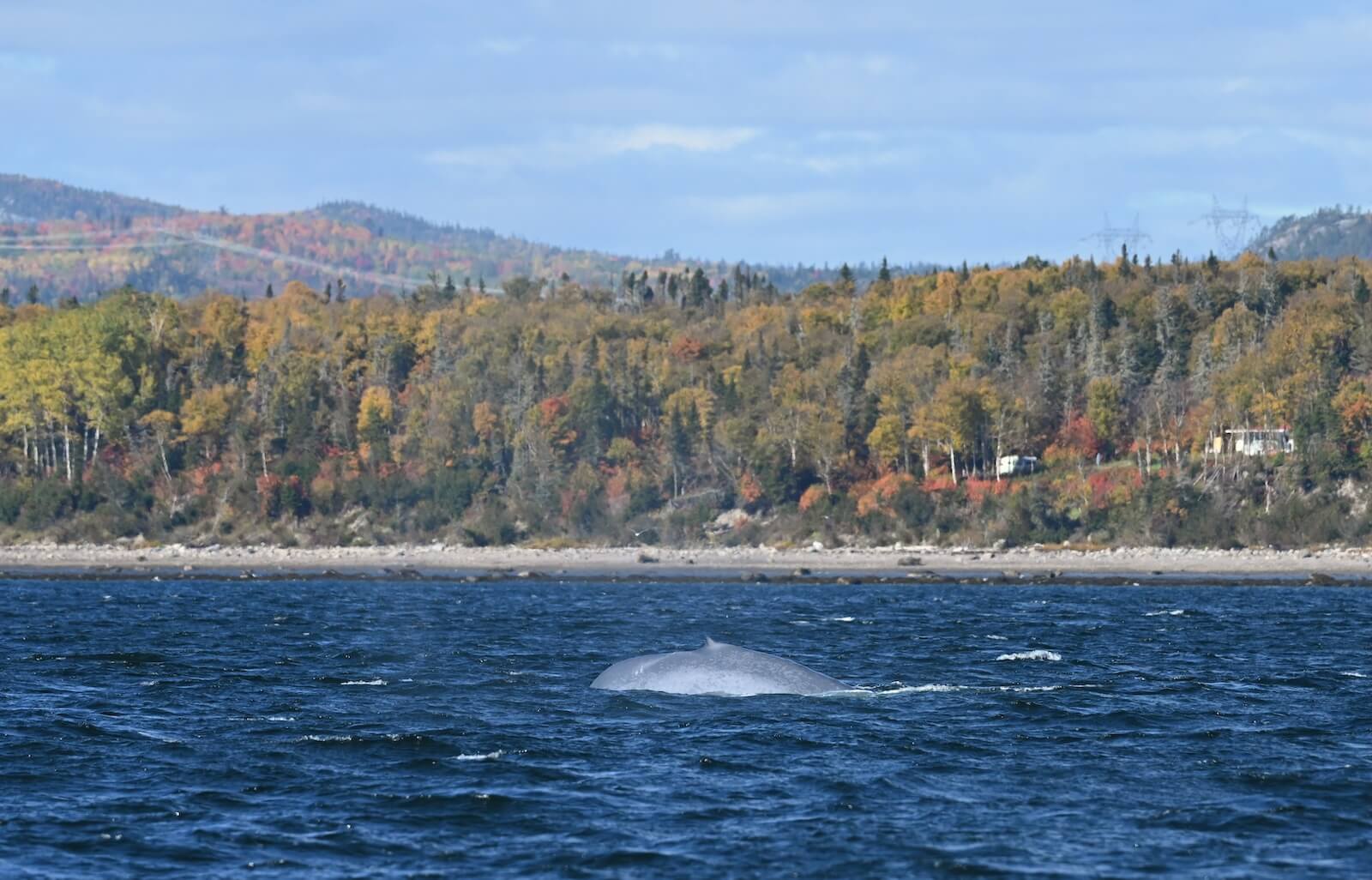“You’ll see, tomorrow morning there will be humpbacks in Les Bergeronnes,” claims Renaud Pintiaux, a long-time observer forWhales Online. Gut feeling, given that a dozen or so individuals had been observed a few days earlier in Franquelin, or just wishful thinking? Whatever the case, there were indeed a few humpback whales in the area the next morning, and even if the two towns are a few kilometres apart, for whales, it’s practically next door!
Humpback whale movements
A dozen or so humpback whales were observed near Franquelin in recent days. According to one keen observer, the whales were split into three groups of 3 or 4 individuals each. “We could clearly see their spouts,” he says. “There were a few minke whales in the mix as well. So there you have it, humpbacks, minke whales and one resident even told me he thought he saw the spout of a fin whale!”
Another cetacean enthusiast was delighted to be able to admire two minke whales taking advantage of the peak tide to feed near the shore in Franquelin. Shortly thereafter, she spots a series of large blasts farther offshore, but still visible to the naked eye. “These blows seem to be those of humpbacks, potentially two individuals heading west!”
On the foggy morning of Thursday, April 27, observers made out the first large blast from the Tadoussac marina. A few hours later, naturalist Renaud Pintiaux spotted a humpback whale at Cap de Bon-Désir in Les Bergeronnes. “I had been there for three hours and just before I left, I heard a blast! Then the fog cleared and I was able to watch it and see its dorsal fin. It was a large humpback and appeared to be heading east.” The morning was rich in marine mammal sightings, as a group of about thirty belugas also made an appearance, not to mention the observation of the first porpoise of the season for this wildlife photographer.
However, this wasn’t the only species of whale prowling the salty estuary waters! A minke whale was also spotted on several occasions. Early in the week, on Monday April 24, a fin whale was sighted off Cap de Bon-Désir. It was quite far offshore, but Renaud was able to admire this behemoth through his binoculars. “It would take a breath and then disappear for about twelve minutes,” he explains. The same day, a friend photographed a distant fin whale from the ferry terminal in Les Escoumins. In Gaspé Bay, a biologist spotted a few humpbacks while carrying out an owl survey in Forillon National Park. One might say he was listening for hoots but heard blowing whales instead!
Cetaceans and pinnipeds omnipresent
Belugas have definitely made their return to the estuary, with groups of thirty or so individuals being tallied on several occasions, and they seem to be venturing farther and farther east.
White backs were spotted several times between Tadoussac and Les Escoumins: a group of 20 at the mouth of the Saguenay one morning, a lone individual quietly working its way up the fjord, and several groups moving along the coast. One very particular individual was noted that is easy to recognize by the shape of its back. Could it be Pascolio, a beluga plagued by scoliosis? That remains to be confirmed.
In Rivière-Ouelle, one observer admired a pod of between 7 and 10 belugas. On the other side of the river, in Saint-Iréné, the first belugas of the year were purportedly observed a few times, though we are still awaiting the arrival of capelin, which generally coincides with more regular sightings of these white whales.
Harbour seals and grey seals were seen from the north shore of the estuary. A harbour seal gulps down a fish in Tadoussac Bay, another one in Les Bergeronnes stares down a cormorant in defence of a choice rock under the sun, and grey seals make appearances at several locations.
A harp seal, a few porpoises and minke whales were reported from the Sept-Îles sector. “Minke whales always arrive together with scoters!” remarks mariner and marine mammal observer Jacques Gélineau. A blue whale was also present! Beyond the bay, about 1 nautical mile offshore, this gigantic animal was peacefully roaming about.
Share your observations!
Have you observed marine mammals in the St. Lawrence River? Whether it’s an offshore puff or a few seals, write to us and send us your photos to [email protected]!










